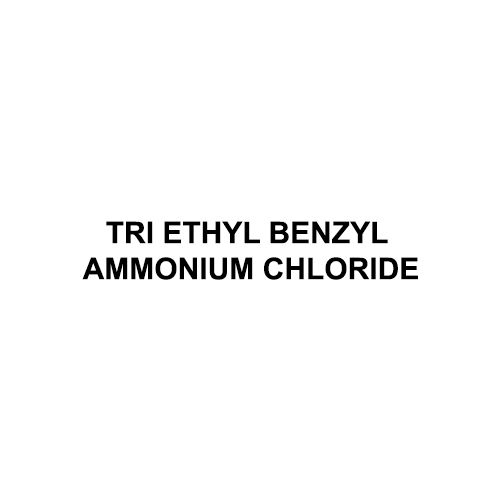Call us now : +917042363622
Tri Ethyl Benzyl Ammonium Chloride

X
Product Description
Triethylbenzylammonium chloride (TEBAC) is a quaternary ammonium compound with the chemical formula C12H20ClN. It is a white or off-white solid that is soluble in water and organic solvents like ethanol and acetone. TEBAC is commonly used as a phase transfer catalyst and as a surfactant.
In organic synthesis, TEBAC is used as a phase transfer catalyst to facilitate reactions between compounds that are insoluble in each other. It is particularly useful in reactions involving aromatic compounds, and is often used in the synthesis of pharmaceuticals, agrochemicals, and specialty chemicals.
TEBAC is also used as a surfactant in a variety of applications. It can be used as an emulsifier, a wetting agent, and a dispersant. It is often used in the production of coatings, adhesives, and sealants.
TEBAC is generally considered safe to handle and use, but it can be an irritant if it comes into contact with skin or eyes. Protective equipment like gloves and safety glasses should be worn when handling TEBAC.
Triethylbenzylammonium Chloride Properties:
- CAS No: 56-37-1
- pH: 6,0 - 8,0 at 100 g/l at 20 degree centigrade
- Molar Mass: 227.77g/moll
- Preferred IUPAC Name: Benzyltriethylazanium Chloride
- Density: 1.08 g/ml
- Assay: 98.0%
- Melting Point: 239 degree centigrade
- Moisture: 1.0%
- EINECS Number: 200-300-3
- HS Code: 29239000
FAQ
1. What exactly is tri-ethylbenzylammonium chloride?
Ans - The quaternary ammonium cation (QAC) tri ethyl benzyl ammonium chloride is a surfactant found in cleaning supplies, antiseptics, and insecticides.
2. What is the purpose of tri ethyl benzyl ammonium chloride?
Ans - The answer is that pesticides, cleaning agents, and disinfectants all contain tri ethyl benzyl ammonium chloride as a surfactant. It functions by reducing a liquid's surface tension, enabling it to spread out and penetrate surfaces it comes into touch with.
3. What potential risks do tri ethylbenzylammonium chloride present?
Ans - Inhaling tri ethyl benzyl ammonium chloride can cause respiratory problems and is irritating to the skin and eyes. It should not be used in locations where it might come into touch with water since it is hazardous to aquatic life.
4. Is the use of Tri Ethyl Benzyl Ammonium Chloride in food items approved?
Ans - The use of tri ethyl benzyl ammonium chloride in food products is not authorised.
5. What are some Tri Ethyl Benzyl Ammonium Chloride substitutes?
Ans - Natural surfactants like soap, baking soda, and vinegar as well as artificial surfactants like sodium lauryl sulphate are alternatives to tri ethyl benzyl ammonium chloride.
Enter Buying Requirement Details

 English
English Spanish
Spanish French
French German
German Italian
Italian Chinese (Simplified)
Chinese (Simplified) Japanese
Japanese Korean
Korean Arabic
Arabic Portuguese
Portuguese





 Send Inquiry
Send Inquiry Send SMS
Send SMS